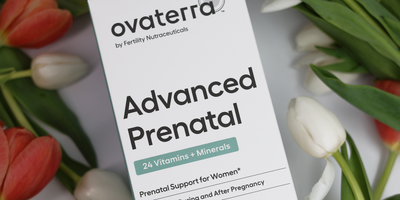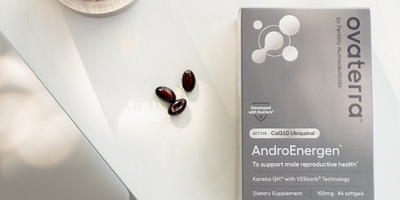When is a woman most fertile? Given that the fertile period is only 4-5 days every month, that’s a key question when trying to conceive. Understanding your unique fertility pattern can help you better plan for pregnancy, increase your chance of getting pregnant and reduce some of the stress and anxiety associated with this journey. Let’s review the fertility timeline – both within a menstrual cycle and over your lifetime – so you can take better control of your family planning.
When you are fertile during a menstrual cycle
To understand when you are most likely to be fertile, understanding the basics of the menstrual cycle is the first step. The female reproductive system works on a 20- to 35-day cycle, known as the menstrual cycle. This is the process that prepares multiple systems in our body each month for a pregnancy.
It’s important to note here that some women have a shorter or longer cycle, and in many cases, that doesn't affect their reproductive health. The key is to know your own cycle pattern.
The first day of your period is considered the start of your menstrual cycle. On average, about 14 days after the first day of your last period, an egg is released (ovulation) for possible fertilization by a sperm. The days around ovulation is often called your fertile window, though sometimes it’s called ovulation period.
4-5 days of fertile window
Women are most likely to get pregnant three to four days before and up to the day of ovulation, midway through the menstrual cycle. The time of ovulation is quite individual, with some women ovulating earlier or later than the “14-day average.” The key, again, is to know when you ovulate.
Why women are fertile only for a short time each month
The short fertility period has to do with how long sperm and egg can survive in the female reproductive tract.
Sperm can live for three to five days after ejaculation inside the female reproductive system, but an egg can survive for just 12 to 24 hours after ovulation - and ovulation happens only once in each cycle. So, ideally, the sperm should already be in the body at the time of ovulation, ready to fertilize the egg once it's released.
Phases of a menstrual cycle
What happens in each phase of the menstrual cycle is multi-faceted, but here is a quick breakdown to understand the fertile window better.

- Menstruation: The menstrual phase begins on the first day of your period. The uterine lining, which has thickened in preparation for a pregnancy in the previous cycle, is eliminated through the vagina. This is your period. The menstrual phase is a part of your follicular phase.
- Follicular Phase:The first half of your menstrual cycle before ovulation is known as the follicular phase. During this phase, follicle-stimulating hormone and other hormones are released to support the final development of the egg in the ovarian follicle – the cells that surround and nurture the maturing egg. Follicular phase ends with ovulation.
- Ovulation:Ovulation happens around the middle of the cycle, often (but not always) 12 to 14 days before menstruation begins again. Just before ovulation, the body produces a surge of estrogen. Then, luteinizing hormone (LH) surges, triggering ovulation. After the months-long maturation journey, a mature egg is released from the follicle and stays on the surface of the ovary.
- Luteal Phase:The second half of the cycle following ovulation is known as the (post-ovulatory) luteal phase. During this phase, the now-empty follicle transforms into a structure known as the corpus luteum, and the endometrium lining thickens to prepare for a possible pregnancy. Luteal phase ends on the first day of your next period.
How to tell if you are ovulating
Every woman’s menstrual cycle is different, so it’s impossible to determine your exact fertile dates or your ovulation day simply by looking at a generic menstrual chart. However, there are a few key signals to pay attention to.
- Basal body temperature: Your basal body temperature (BBT) rises slightly during ovulation and stays a bit higher until the cycle begins again. Checking your temperature first thing in the morning each day can help you identify these subtle changes and detect ovulation.
- Cervical mucus: Some women are able to detect ovulation based on the changes in their cervical mucus. Cervical mucus starts out dry or pasty, but as you near ovulation, it usually turns more watery and starts to feel like raw egg whites.
- Ovulation tests: There are many ovulation tests that detect ovulation through the levels of certain reproductive hormones in your urine. Newer tests can also detect your entire fertile period, rather than just the day of your ovulation.
- Other clues: There are other, less reliable clues that give some women a signal, including cramps during ovulation and increase in sex drive.

At what age is a woman most fertile?
One more important thing to remember: Pregnancy is not just about finding the right time of the month to have sex. It’s also about finding the right time in your life.
According to the American College of Obstetricians and Gynecologists, a woman’s peak reproductive years occur between the late teens and late 20s and, by age 30, fertility levels begin to decline. Female fertility begins to decline more quickly around the mid-30s for women, primarily through a decline in the quality and quantity of eggs that remain in the ovaries.
That said, women don’t suddenly stop being fertile after 35. According to one analysis of a large-scale historical data, 88% of women were able to have children after age 35 without fertility treatments or other medical interventions. The likelihood dropped to 80% after age 38, but that’s still a very good number. Here’s more on what really happens to female fertility after age 35.
How to tell if you are fertile
How do you know if you are fertile? Knowing that you are ovulating or when you are fertile is a part of the answer. However, reproductive health is more than just ovulation; ovulated egg has to be of good enough quality to get fertilized and develop into a healthy embryo, and the uterus has to be in good enough shape to create a welcoming environment for the implanting embryo, just to name a few. To really make sure that you are fertile – that all aspects involved in your reproductive health are in good working condition – we recommend a preconception checkup at your OBGYN’s office.
Setting up your body for a healthy pregnancy
Pregnancy is partly a matter of timing, and paying close attention to your own cycle will help you time your intercourse and increase your chances of conception. In addition:
- Get a preconception checkup. Talking to your doctor and getting some tests done can rule out the most likely causes of fertility struggles.
- Start on a high-quality prenatal vitamins. As soon as you start trying, get started on a high-quality prenatal vitamins. A vast majority of women are low on multiple key prenatal nutrients, many of which have been suggested as key to the preconception period – not just after you are pregnant. For example, Vitamins C and E may help protect your eggs from oxidative damage, while B vitamins like folate and B12 may support healthy ovulation. Make sure your prenatal vitamins contain these fertility-supporting minerals, too.
- Include your partner. For those of you who are trying with a male partner, make sure he is taking care of his reproductive health.
- Make a TTC to-do list. Insurance coverage, lifestyle modifications, endocrine disruptors and more. Take a look at our guide to figure out what should be on your TTC to-do list.
Please reach out if we can answer any questions about when you are fertile, or anything else about your journey. We are with you.












